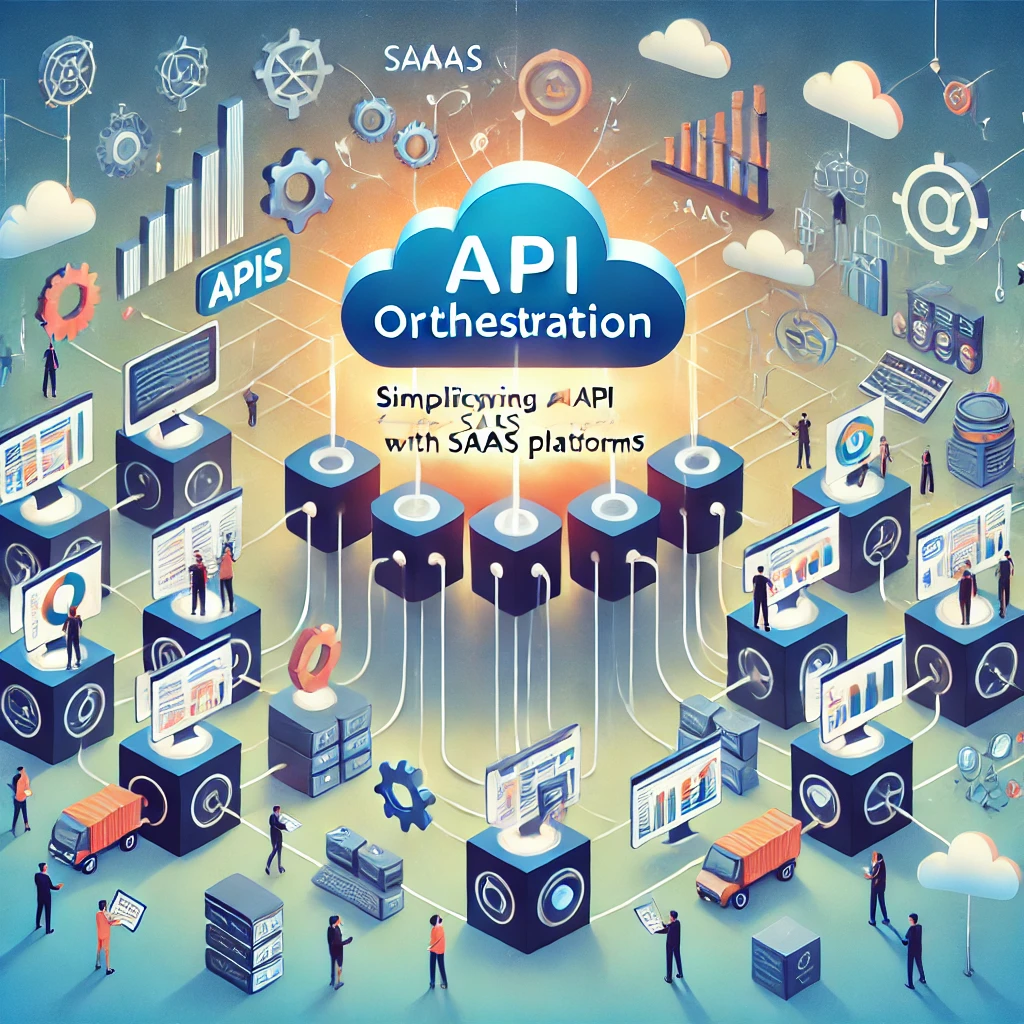Simplifying API Orchestration for SaaS Platforms with Syncloop

Syncloop offers a comprehensive platform for simplifying API orchestration in SaaS platforms. Its advanced tools enable automation, monitoring, and optimization of API workflows, ensuring scalability and reliability. This blog explores how Syncloop supports API orchestration and outlines best practices for building efficient solutions.
The Role of API Orchestration in SaaS Platforms
API orchestration empowers SaaS platforms to:
- Integrate Services: Connect diverse APIs to create unified workflows.
- Automate Processes: Trigger automated workflows across services, reducing manual intervention.
- Enhance User Experience: Deliver seamless and consistent experiences through coordinated API operations.
- Optimize Performance: Streamline communication between services to reduce latency.
- Scale Operations: Handle increased API traffic efficiently as platforms grow.
Challenges in API Orchestration
- Complex Dependencies Managing workflows with multiple interdependent APIs.
- Latency Minimizing delays caused by sequential or synchronous API calls.
- Error Propagation Ensuring one API failure does not disrupt the entire workflow.
- Scalability Orchestrating APIs in high-traffic environments without performance degradation.
- Monitoring and Debugging Gaining visibility into multi-step workflows and identifying issues.
How Syncloop Simplifies API Orchestration
Syncloop provides tools and features to address the complexities of API orchestration:
- Workflow Automation Create and manage workflows with visual tools to coordinate multiple APIs.
- Error Handling and Recovery Implement retries, fallbacks, and conditional logic to handle failures gracefully.
- Dynamic Data Mapping Normalize and transform data between APIs to ensure compatibility.
- Real-Time Monitoring Track the status of workflows and individual API calls with live dashboards.
- Scalable Infrastructure Support growing API workloads with automatic scaling and optimized resource allocation.
- Security and Compliance Protect data with encryption, authentication, and role-based access control.
- Custom Alerts Configure notifications for anomalies or workflow disruptions.
Steps to Orchestrate APIs with Syncloop
Step 1: Map Workflows
Identify the workflows that require orchestration. Examples include:
- User onboarding workflows integrating CRM, billing, and email services.
- Data synchronization between SaaS platforms.
- Real-time notifications triggered by user activities.
Step 2: Configure API Endpoints
Use Syncloop to define and configure the endpoints involved in the workflows. Examples:
- /user/create: Integrates CRM and billing systems.
- /sync/data: Synchronizes inventory between ERP and e-commerce platforms.
- /notify/event: Sends notifications via SMS and email services.
Step 3: Design Workflows
Leverage Syncloop’s workflow automation tools to orchestrate API calls. Configure:
- Sequential or parallel execution of API calls.
- Conditional logic for decision-making based on API responses.
- Error handling mechanisms like retries or fallbacks.
Step 4: Optimize Data Flow
Normalize data formats using Syncloop’s dynamic data mapping tools. Ensure:
- Field mappings between APIs are accurate.
- Data transformations (e.g., unit conversions) are applied where necessary.
Step 5: Monitor and Analyze
Enable real-time monitoring to track workflow execution. Use Syncloop to:
- Measure latency and success rates for individual API calls.
- Detect bottlenecks or errors in workflows.
- Analyze trends for optimization opportunities.
Step 6: Test and Validate
Simulate workflows in Syncloop’s testing environment to validate:
- Workflow logic for different scenarios.
- Error handling effectiveness.
- Performance under load conditions.
Best Practices for API Orchestration
- Design Resilient Workflows Use retries, timeouts, and fallbacks to handle API failures gracefully.
- Optimize for Scalability Design workflows to handle increased traffic seamlessly.
- Leverage Parallel Processing Execute independent API calls concurrently to reduce overall latency.
- Monitor Continuously Use Syncloop’s monitoring tools to track and optimize workflows.
- Document Orchestration Logic Maintain clear documentation for easier troubleshooting and updates.
Example Use Case: Multi-Tenant SaaS Platform
A multi-tenant SaaS platform uses Syncloop to orchestrate user onboarding workflows:
- Workflow Automation: Automate user creation in CRM, billing, and notification systems.
- Error Recovery: Retry failed API calls and trigger fallback actions for critical steps.
- Data Transformation: Map and normalize user data across multiple services.
- Real-Time Monitoring: Track onboarding status for each tenant and resolve issues proactively.
- Scalability: Handle high onboarding volumes during peak sign-up periods.
Benefits of Using Syncloop for API Orchestration
- Improved Efficiency: Automate complex workflows and reduce manual effort.
- Enhanced Resilience: Build fault-tolerant workflows with robust error handling.
- Scalability: Support growing API traffic without performance degradation.
- Actionable Insights: Gain visibility into workflow performance and identify optimization opportunities.
- Seamless Integration: Connect diverse APIs and ensure data consistency.
The Future of API Orchestration in SaaS
As SaaS platforms continue to grow and diversify, efficient API orchestration will remain crucial for delivering seamless and reliable services. Syncloop empowers developers to design, monitor, and optimize API workflows, ensuring that SaaS platforms can scale and adapt to evolving demands.
Image Description
A conceptual illustration of API orchestration for SaaS platforms using Syncloop, showcasing automated workflows, real-time monitoring, and error handling. The image highlights seamless integration and scalability for modern SaaS ecosystems.
Back to Blogs